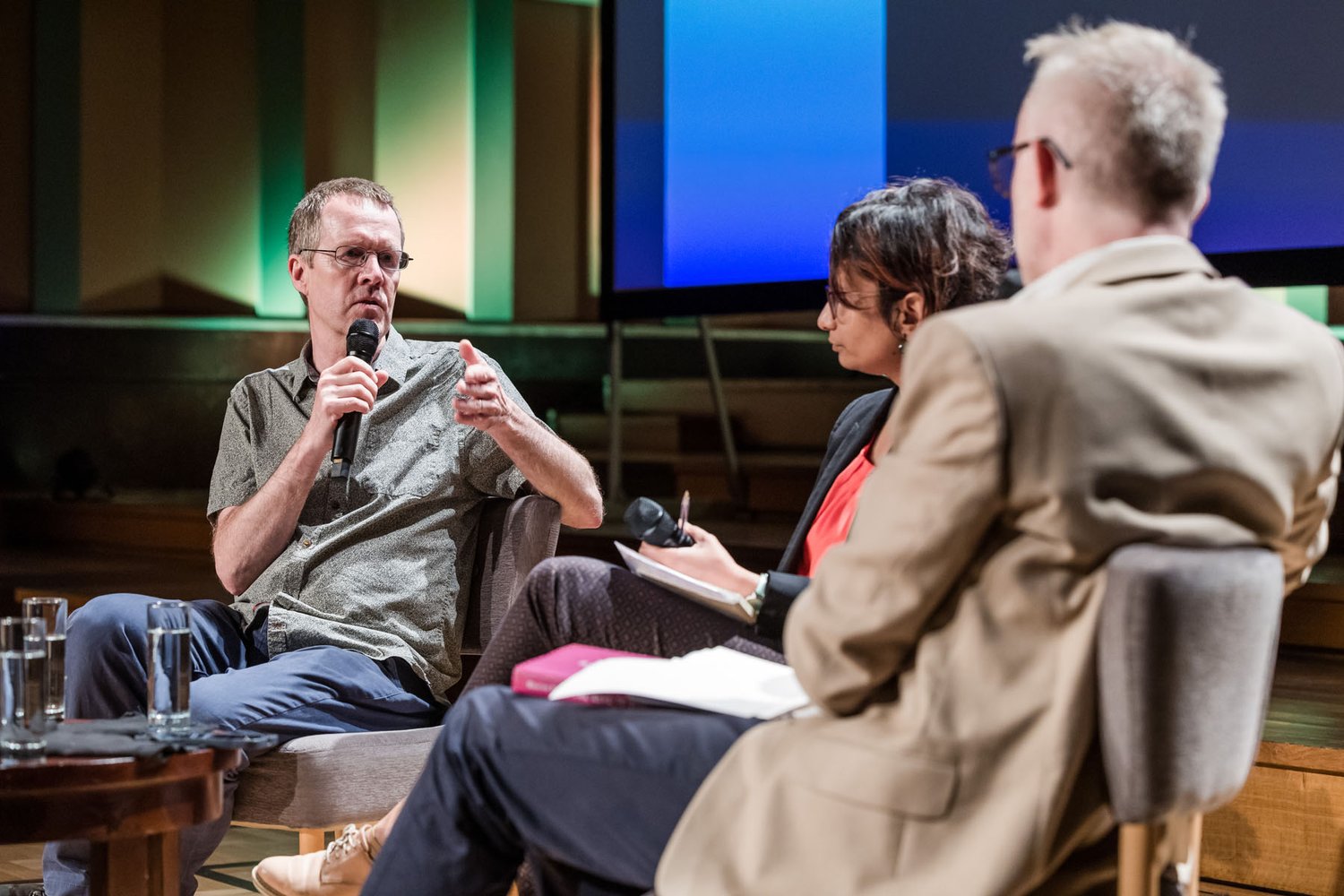27 June 2023
Head of Cabinet of the Vice President for Democracy & Demography at the European Commission, Colin Scicluna, put it simply, “We have adopted the deliberative approach”. He acknowledges that their experience with the Conference on the Future of Europe convinced the Commission to “trust in these types of processes” and has helped them realise the value of involving citizens in policy-making.
Deliberative democracy passes the IKEA test
Executive Director of FIDE, Yves Dejaeghere, needed less convincing as he maintains that deliberative democracy has “passed the IKEA test”. He described the progress of this deliberative wave in recent years as “breath-taking”. Yet he highlighted a number of challenges going forward: the risk of stagnation, now that initial euphoria is dying down and the importance of dedicating sufficient resources to these initiatives. “Deliberative democracy should not be seen as an extra that some regions can afford and others can’t”, warns Dejaeghere. He also stressed the importance of continuing to improve the quality of representative democracy to insure that integration with other forms of democracy can be optimal.
The conference focused on how deliberative democracy can be implemented in various contexts and for a range of causes. This included the issue of climate change, implementation at EU level and the perennial challenge of representativeness. Workshop leaders included high-level experts and leaders in the field – Magalie Plovie, President of the French Parliament of Brussels; Gaëtane Ricard-Nihoul, Deputy Head of the Citizens’ Dialogues Unit for the European Commission and Eva Bordos, Director of DemNet and co-organiser of Citizens’ Assemblies in Hungary.
The rise and rise of citizens’ assemblies
Citizens assemblies were spotlighted, particularly those leading expert and academic in the field, Graham Smith, describes as “citizens assemblies for climate”. As the challenge of climate change mushrooms, Smith points out that climate cuts across a wide range of policy areas. It is also an issue that is close to the heart of many European citizens, hence the growing power and popularity of climate assemblies. The challenge now, according to Smith: How do we design, land and embed climate proposals within public institutions effectively?
What about the role of civic tech?
The question of how civic tech can contribute to the deliberative wave was not directly addressed at the conference. When Democracy Technologies asked about it Smith agreed that bringing deliberative practitioners and civic tech together is “a real challenge”. But he agreed that “we need to do much more work together”. On the deliberative side, Smith acknowledges that few practitioners have had the time, energy or knowledge to engage with the range of technologies currently on offer. While on the civic tech side, a lack of real understanding of the intricacies of deliberative processes means that many think one can simply “scale it up with a clever platform”.
Smith mentions Polis as a really successful example of integrating civic tech with citizen-led policy. However, he reiterated the concerns of deliberative practitioners regarding what he terms “skewed publics”. These can arise from online processes due to a lack of information as to who exactly is participating. Dejaeghere added his reservations, citing the digital divide and skewed male publics with high levels of education online, as examples.
More collaboration needed
However, there was also interesting discussion about the ability of tech to help bridge the gap between mini and maxi-publics. The former are typically involved in many deliberative processes including citizens’ assemblies. While the input of online maxi publics would benefit citizens’ assemblies. “I’m all for collaboration in this area”, affirmed Smith, “and I think there isn’t enough of it.”

 Graham Smith, Chair of the Knowledge Network on Climate Assemblies (KNOCA), discussing with Namita Kambli, Research Manager on the EU‘s social agenda at E3G, and David van Reybrouck, author and democracy activist, Photo: FIDE
Graham Smith, Chair of the Knowledge Network on Climate Assemblies (KNOCA), discussing with Namita Kambli, Research Manager on the EU‘s social agenda at E3G, and David van Reybrouck, author and democracy activist, Photo: FIDE